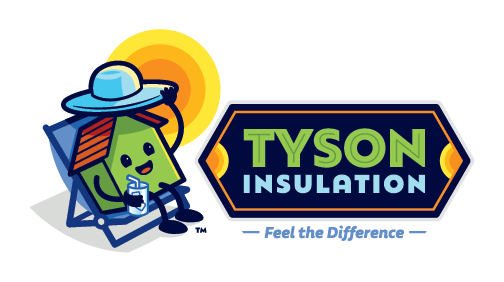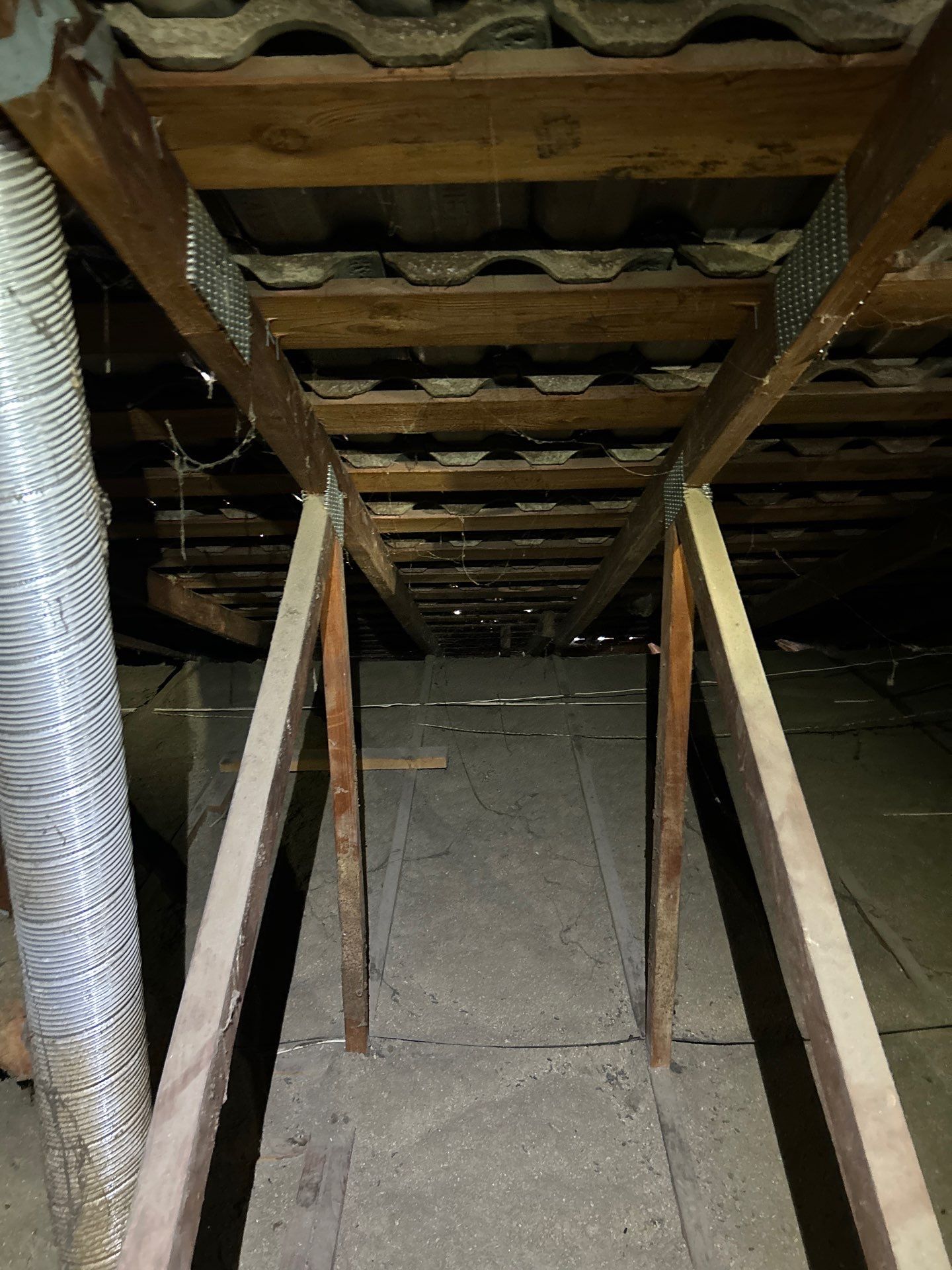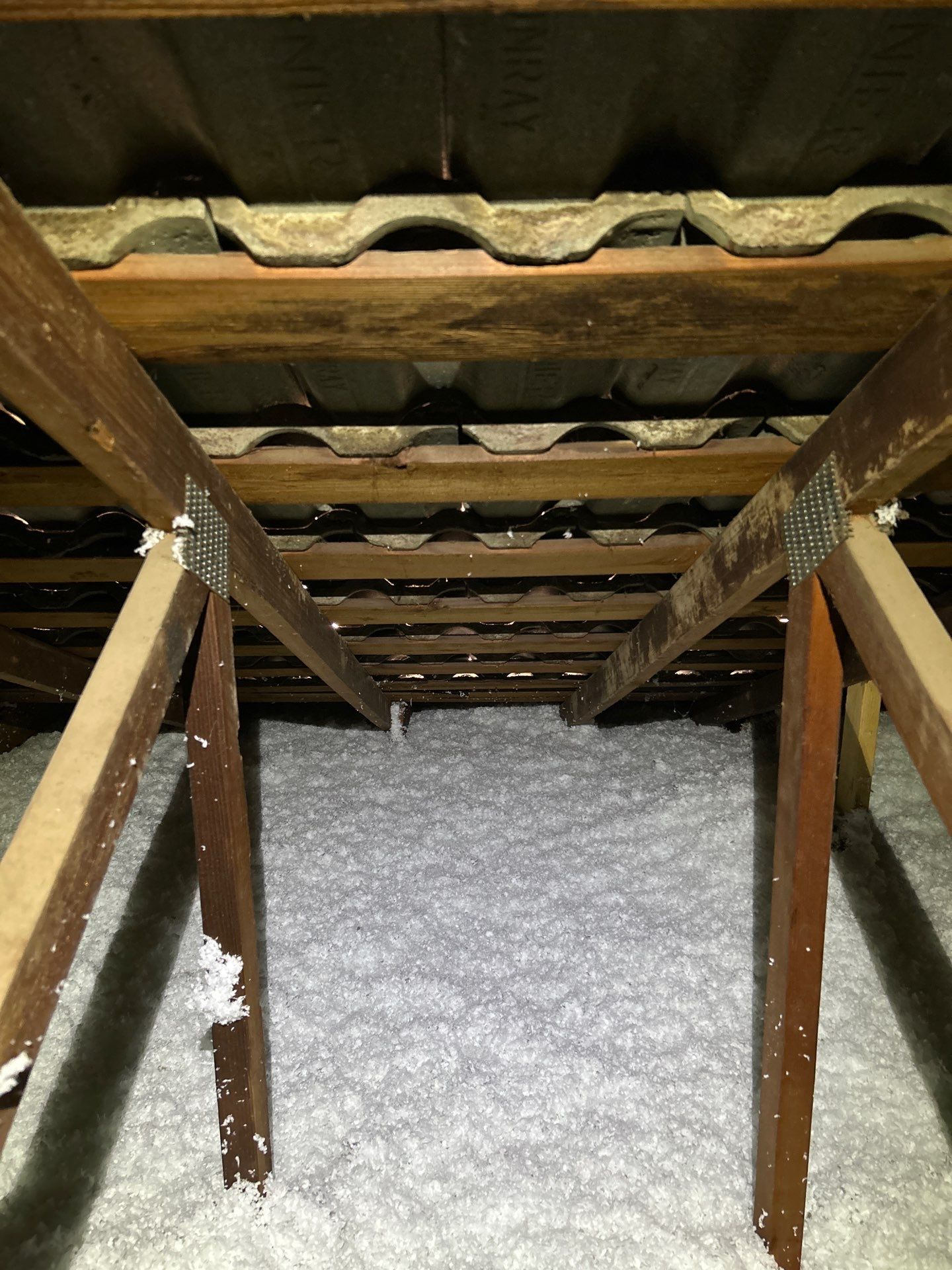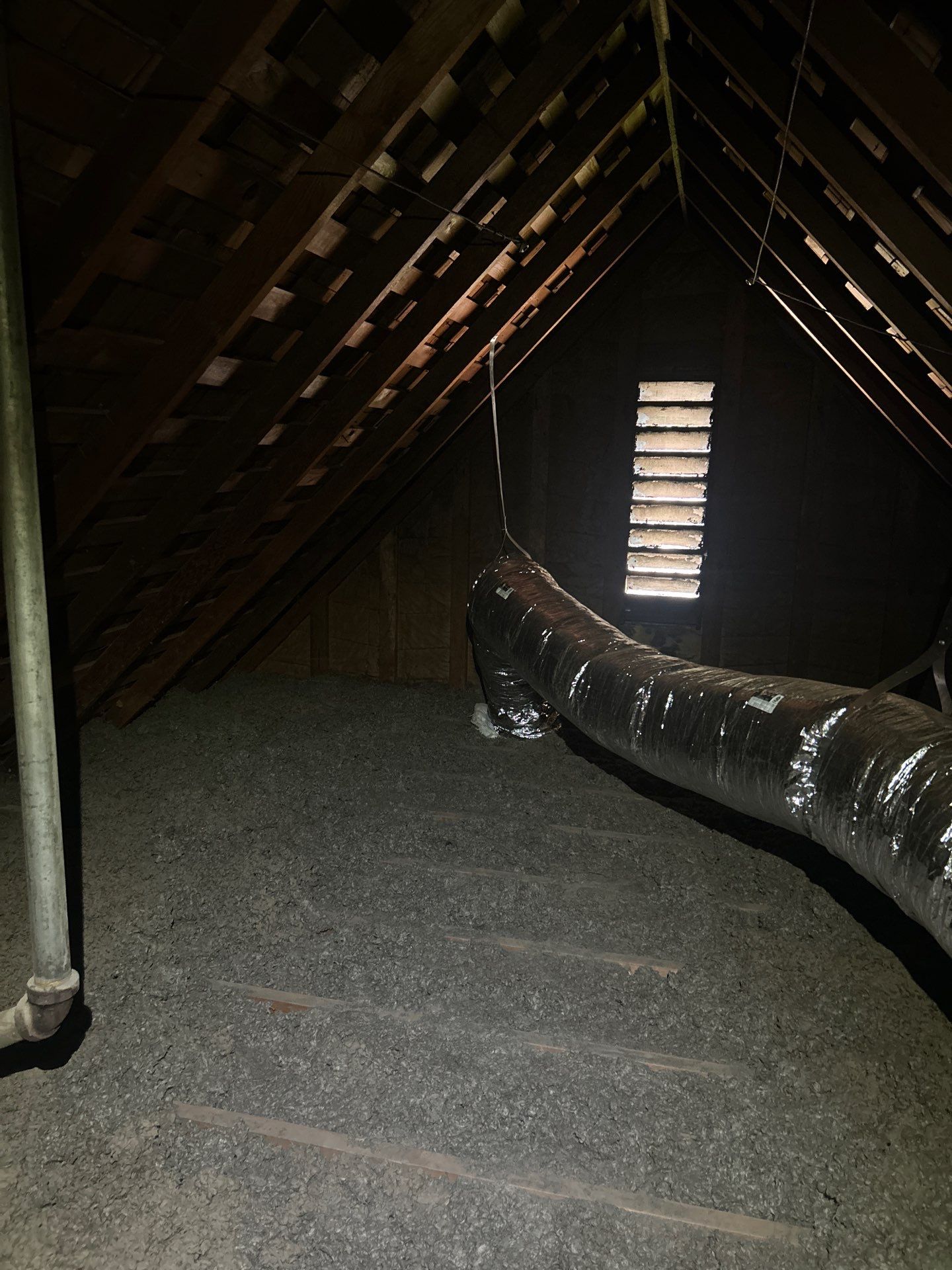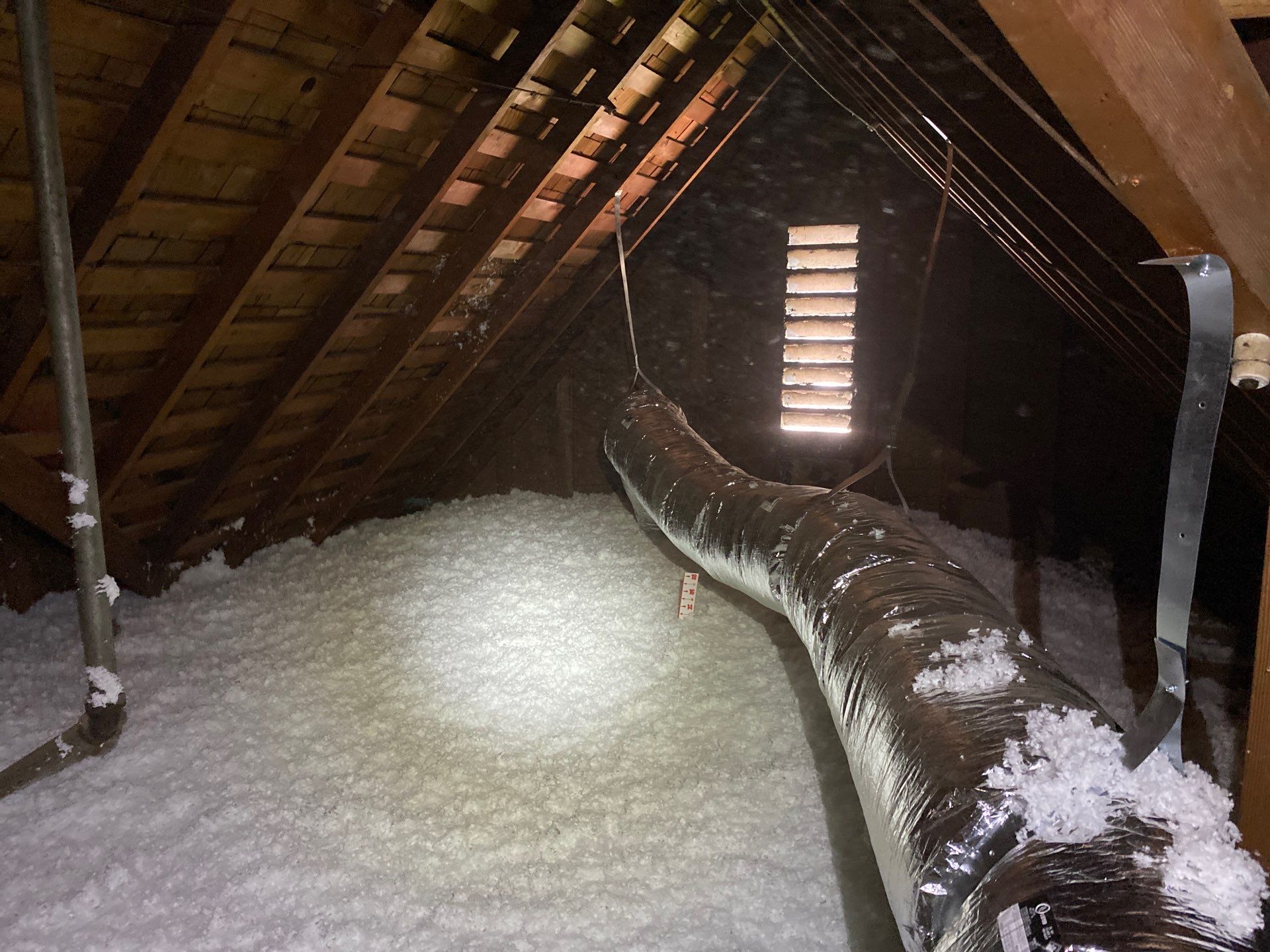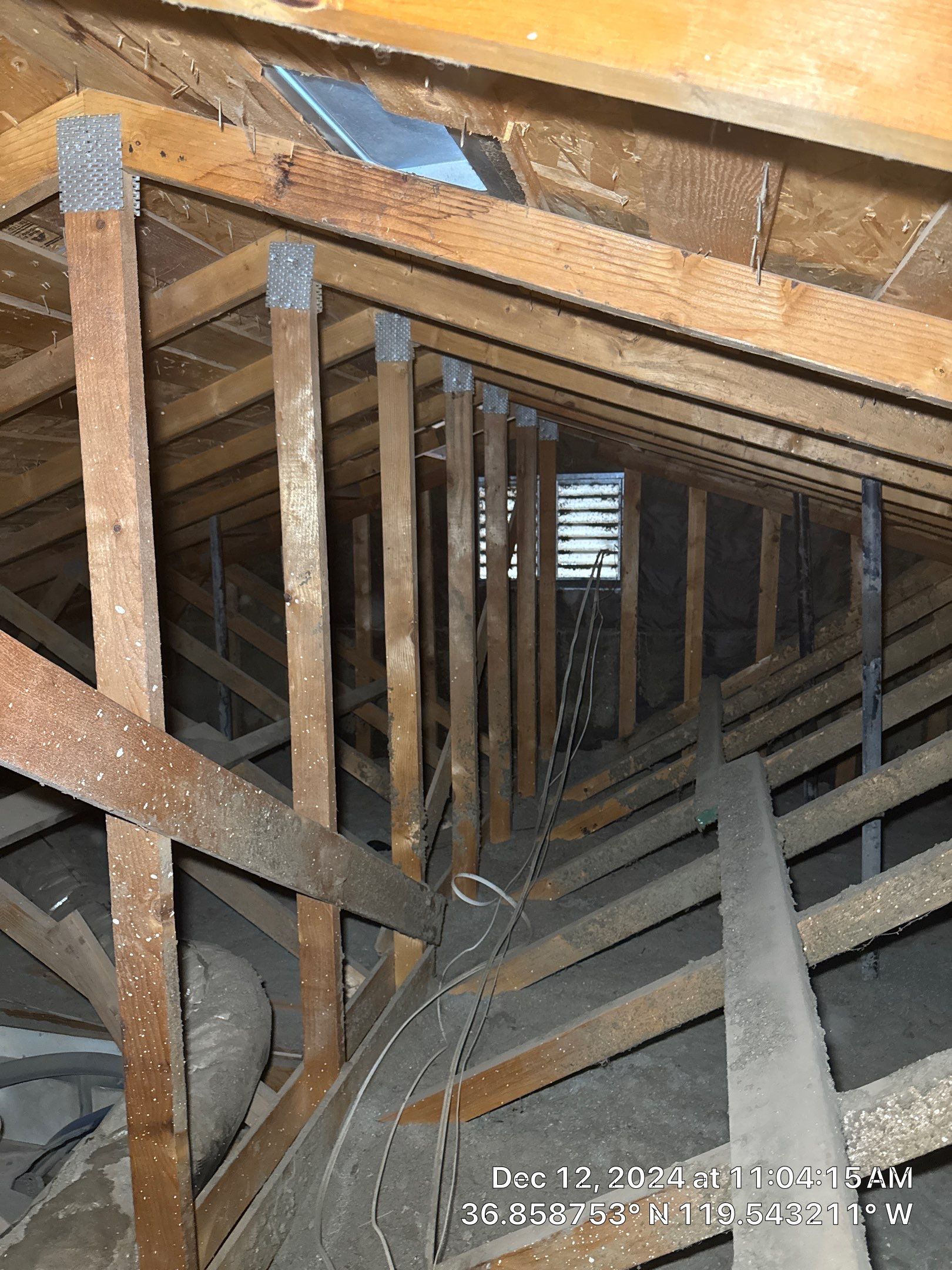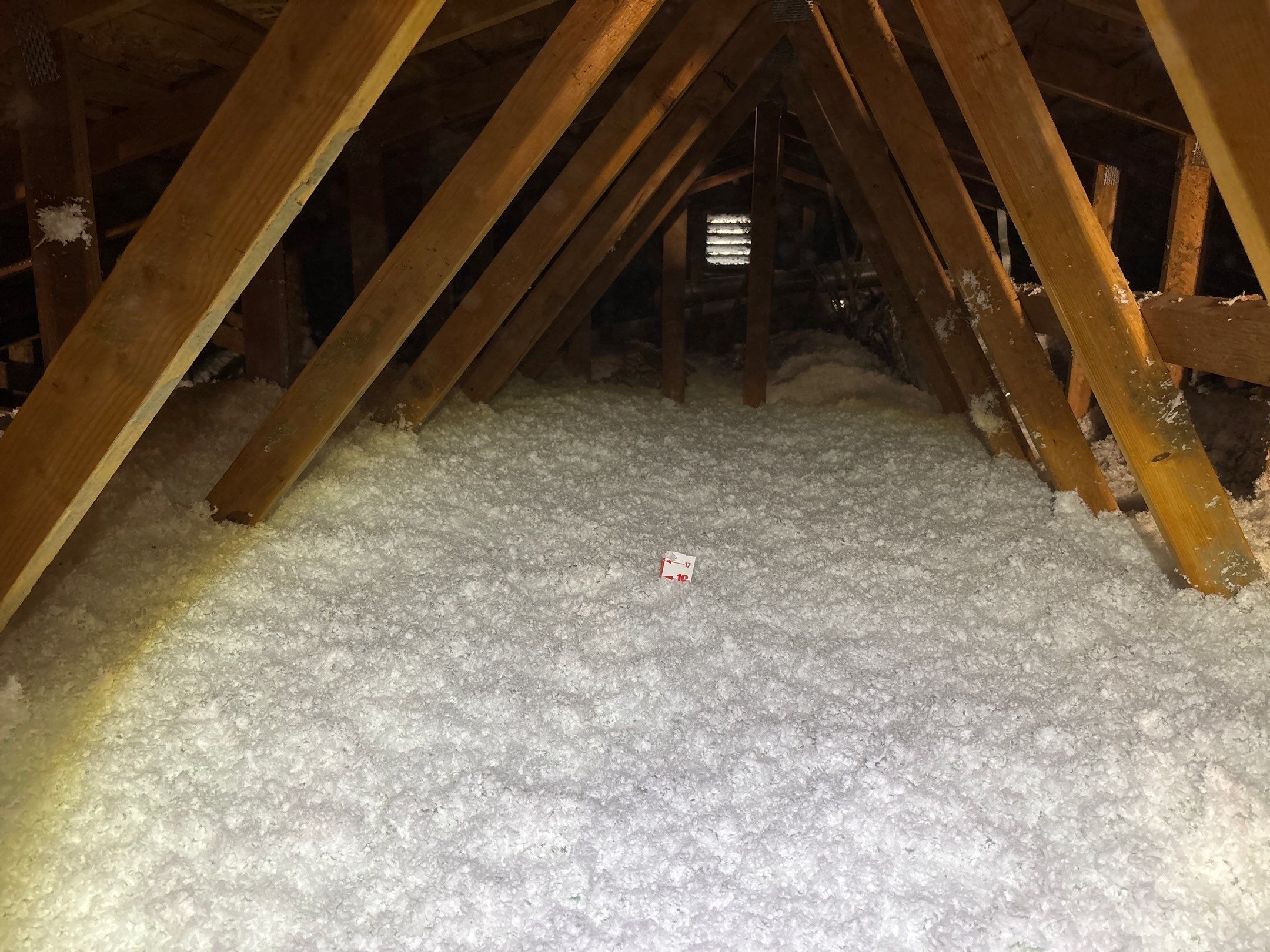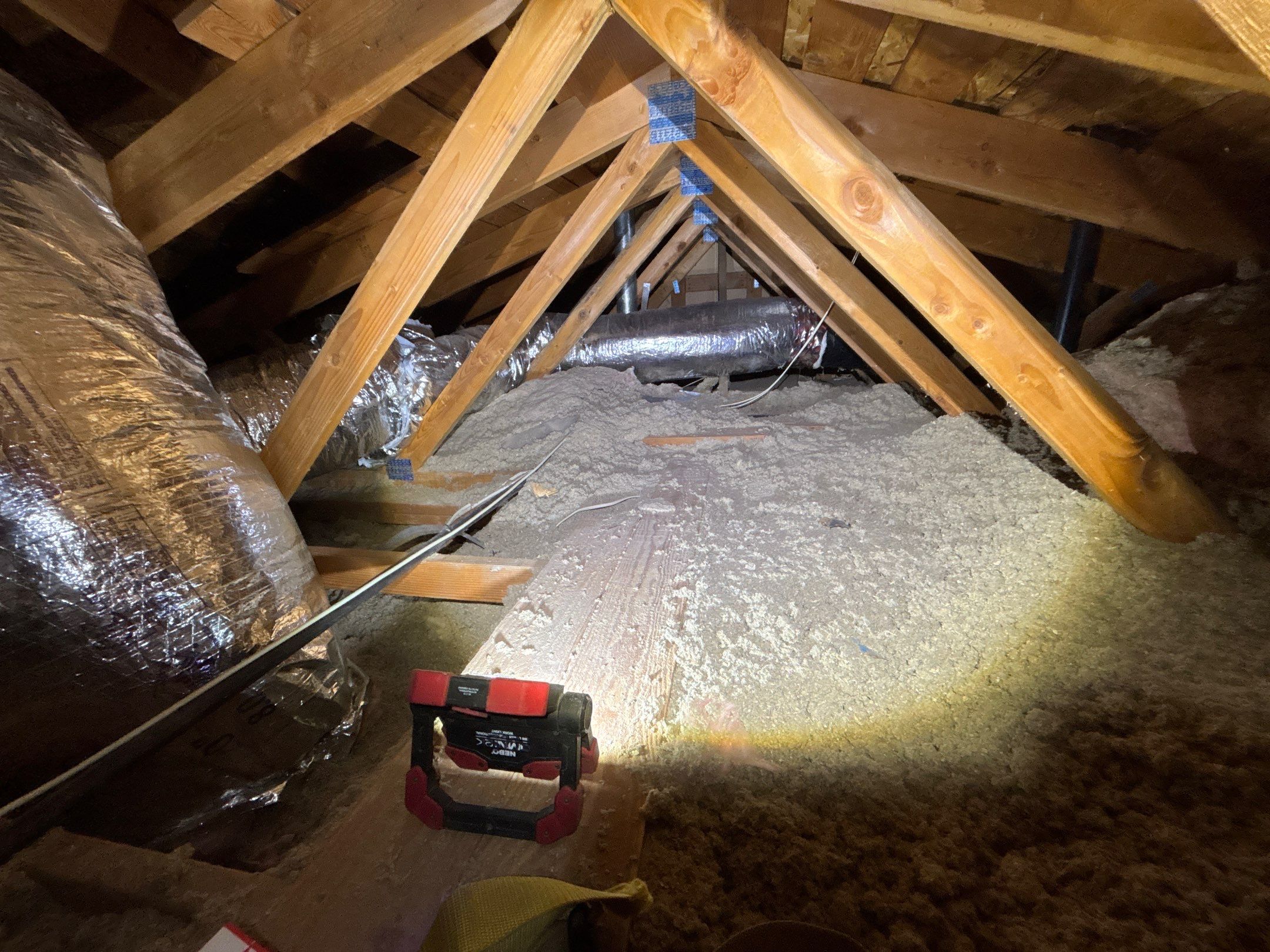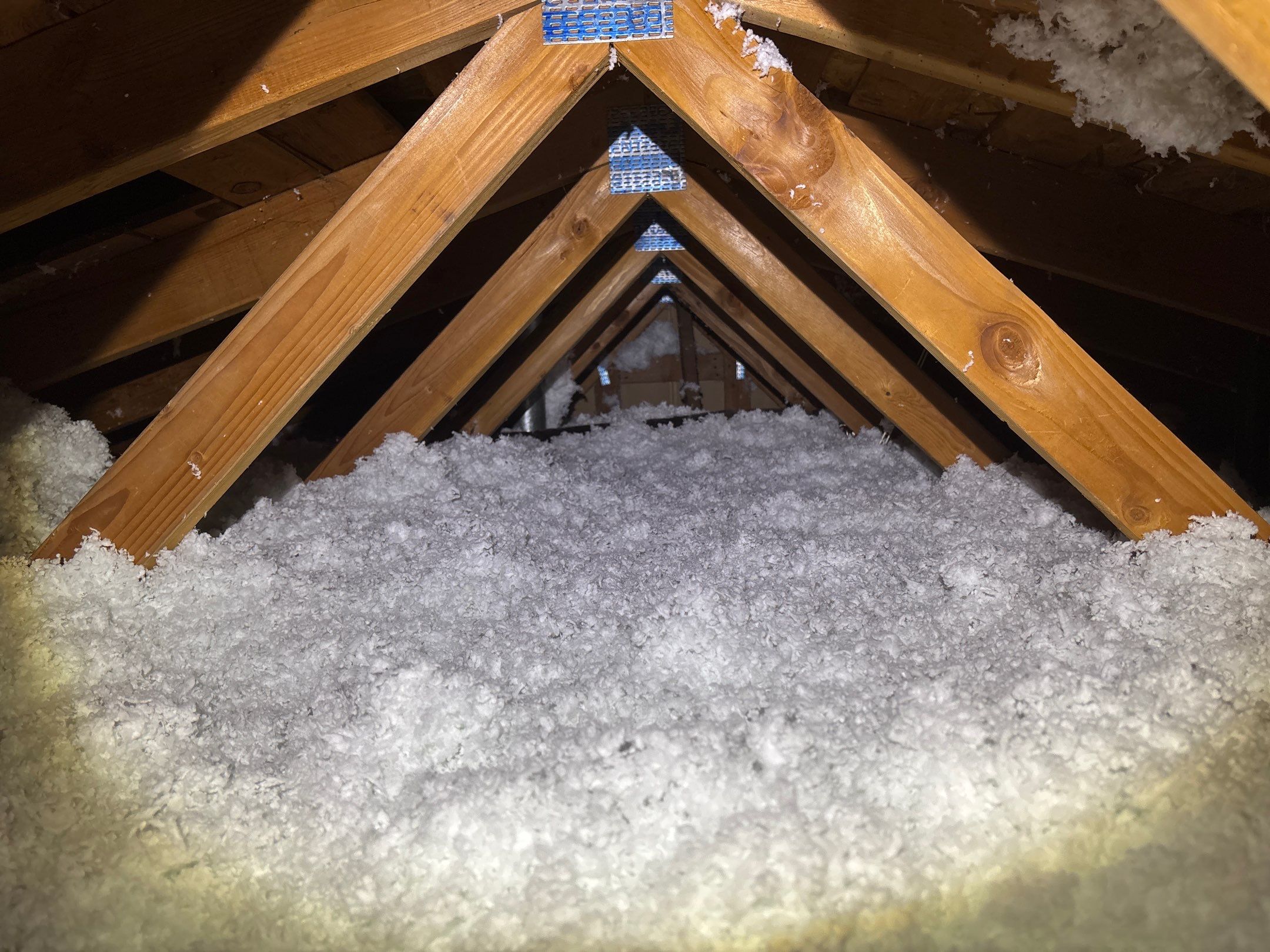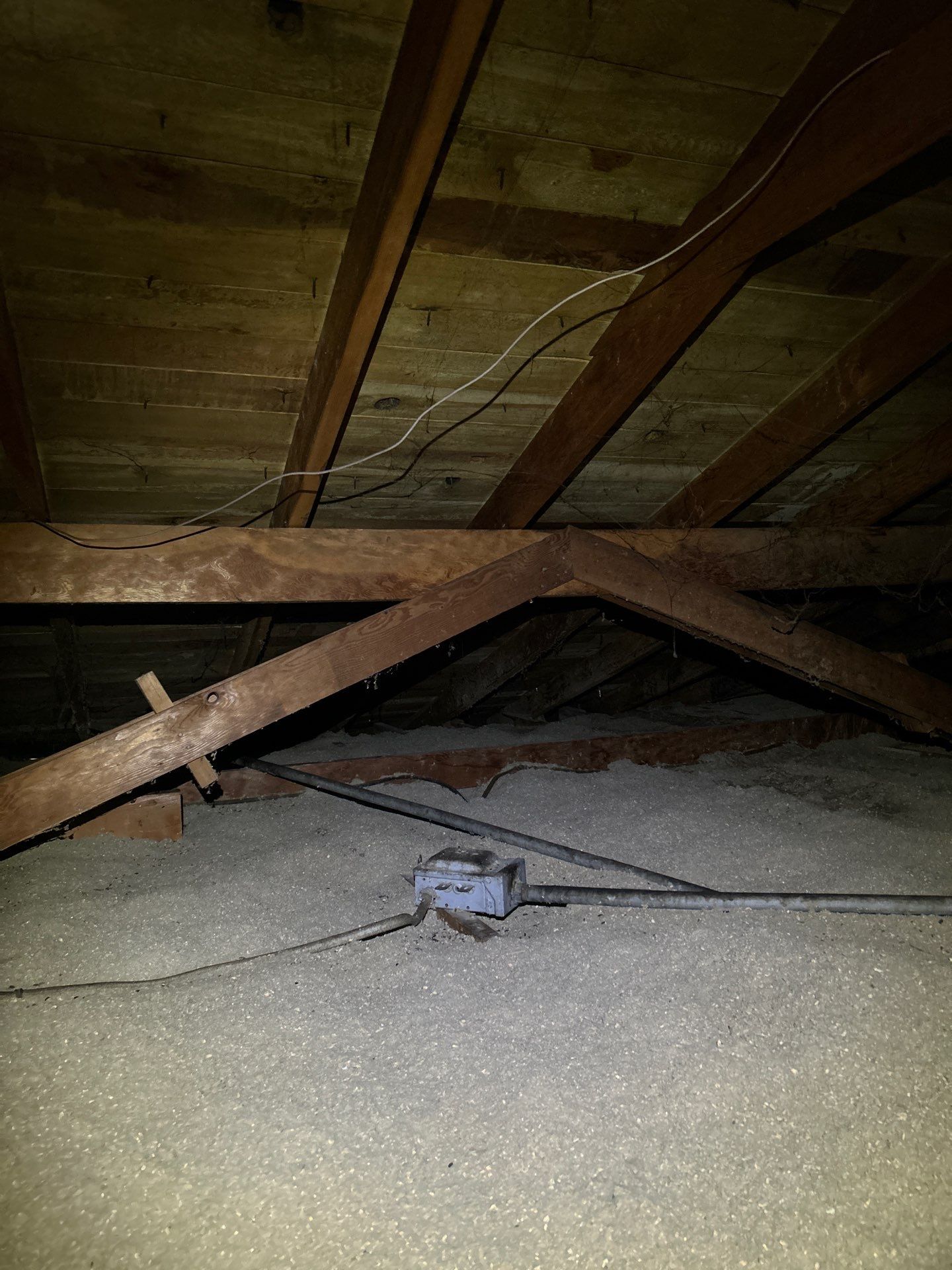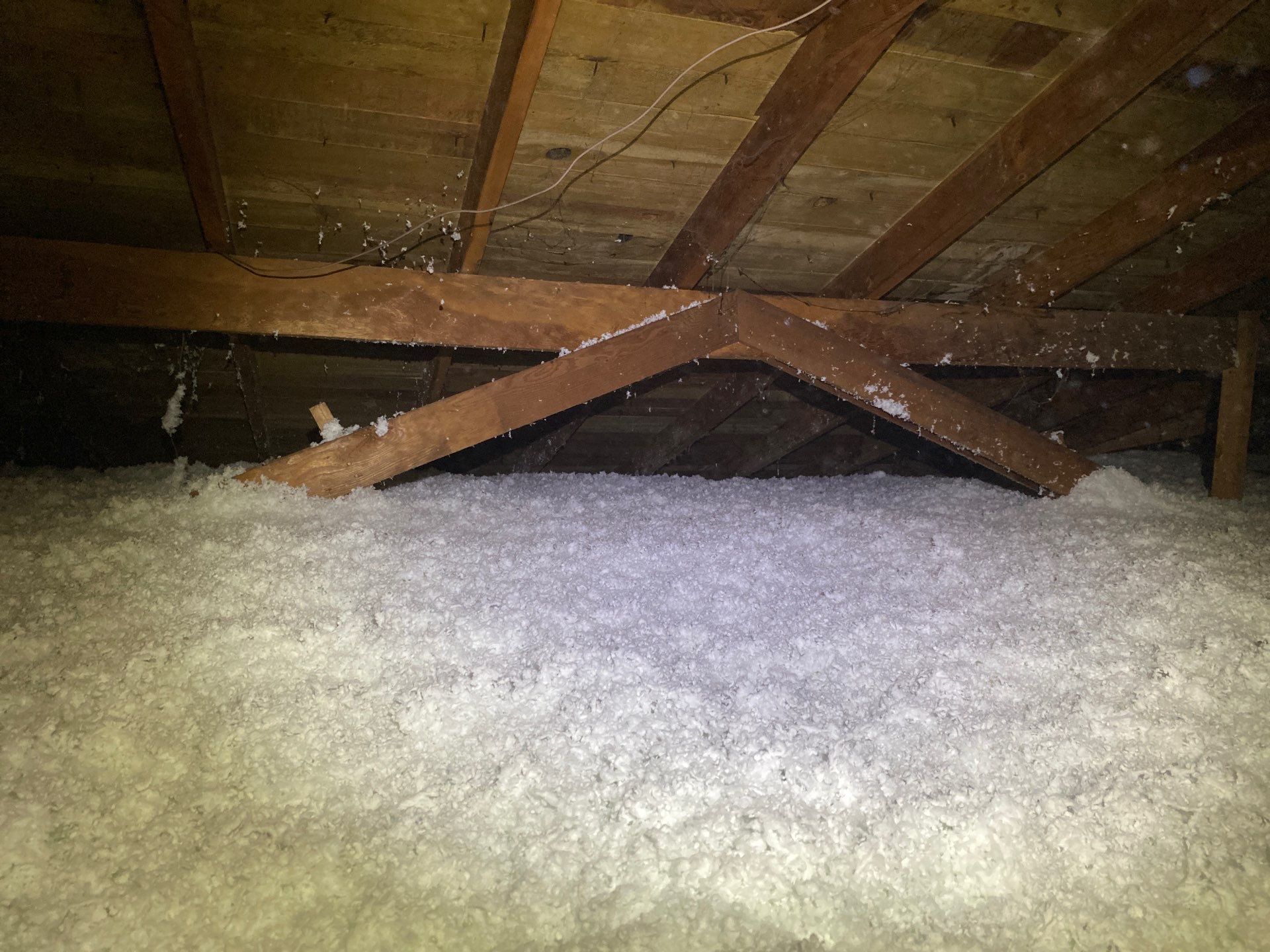Tyson Insulation Before & After Photos
Click on a photo to enlarge.
Juling reached out to us because her home in Clovis was struggling to maintain a stable indoor temperature. Her air conditioner was running non-stop in the summer, yet the house remained warm, leading to rising energy bills. After inspecting her attic, we found only 3 inches of old cellulose insulation—well below the recommended level. This inadequate insulation was allowing heat to seep into the home during summer and escape during winter, making her HVAC system work overtime.
To resolve this, we first air-sealed all major leakage points, including gaps around plumbing, wiring, and HVAC registers, using closed-cell foam. This step is crucial in preventing unwanted airflow between the attic and living spaces. Once the attic was properly sealed, we installed high-quality blown-in fiberglass insulation, bringing the attic up to an R38 level, which meets Energy Star recommendations for optimal efficiency.
Thanks to this insulation upgrade, Juling’s home will now maintain a more consistent temperature throughout the year, leading to lower heating and cooling costs and a significantly improved level of comfort.
Dulce contacted us because her home in Tulare was struggling to maintain a comfortable temperature. No matter how much she adjusted her thermostat, her HVAC system was running constantly, leading to high energy bills. Upon inspecting her attic, we discovered that she had only 3 inches of old cellulose insulation—far below the recommended level. This lack of insulation was allowing heat to easily transfer between her attic and living areas, making it difficult to keep her home comfortable year-round.
To resolve this issue, we first air-sealed key areas of the attic, including top plates, plumbing and wire penetrations, and HVAC registers, using closed-cell foam. This process prevents unwanted air leakage and ensures that conditioned air stays inside the home. Next, we installed premium blown-in fiberglass insulation, bringing the attic up to an R38 level—the Energy Star recommendation for this region.
With this upgrade, Dulce’s home will now stay cooler in the summer, warmer in the winter, and far more energy-efficient. She’ll enjoy reduced heating and cooling costs while experiencing a more comfortable living environment year-round.
Kenny reached out to us because his home in Clovis was struggling to stay cool in the summer and warm in the winter. His HVAC system was running constantly, yet his home remained uncomfortable, and his energy bills were climbing. After conducting a thorough attic inspection, we found only 4 inches of old cellulose insulation—far below the recommended level—and significant dust and debris buildup. Additionally, there were gaps and air leaks allowing conditioned air to escape, making his HVAC system work even harder.
To restore Kenny’s attic, we began by extracting and disposing of the old, inefficient insulation. We then cleaned and sanitized the entire attic using a powerful disinfectant to eliminate dust, bacteria, and allergens. Next, we sealed all air leaks—including around wiring, plumbing penetrations, and top plates—with closed-cell foam to prevent energy loss. Finally, we blew in premium fiberglass insulation to achieve an R38 level, ensuring maximum efficiency and comfort.
With his fully restored attic, Kenny will now enjoy a more consistent indoor temperature, better air quality, and lower heating and cooling costs for years to come.
Jason reached out to us because his home in Clovis was struggling to maintain a comfortable temperature, causing his HVAC system to work overtime and his energy bills to climb. When we inspected his attic, we discovered that he had only about 3 inches of old cellulose insulation—far below the recommended level. The inadequate insulation was allowing heat to transfer freely between his attic and living spaces, making it difficult to keep his home cool in the summer and warm in the winter.
To resolve this issue, we started by air-sealing key areas of the attic, including top plates, plumbing and wire penetrations, and HVAC registers, using closed-cell foam. This step prevents conditioned air from escaping and keeps the home more energy-efficient. We then upgraded his attic insulation by adding premium blown-in fiberglass insulation, bringing it up to an R38 level, which is the Energy Star recommendation for our region.
With this insulation upgrade, Jason’s home is now much better equipped to maintain a consistent indoor temperature. He will enjoy lower heating and cooling costs, improved energy efficiency, and a more comfortable home year-round.
Melissa contacted us because her home in Fresno was consistently uncomfortable, with uneven temperatures and rising energy bills. Upon inspecting her attic, we discovered that she had only about 4 inches of old, compressed cellulose insulation. This insufficient insulation was a major contributor to heat loss in the winter and heat gain in the summer, forcing her HVAC system to work overtime.
To address the issue, we began by safely removing the old cellulose insulation to create a clean slate. After clearing the attic, we meticulously sealed all potential air leaks, including gaps around wiring, plumbing penetrations, and other common trouble spots, using closed-cell foam. This crucial step helps prevent air from escaping or entering the home, improving energy efficiency.
Once the attic was properly sealed, we installed 14 inches of premium fiberglass insulation, bringing the attic up to an R38 level, which meets Energy Star recommendations. This significant upgrade enhances the home’s ability to maintain a stable, comfortable indoor temperature year-round.
As a result of this insulation upgrade, Melissa will now enjoy a more comfortable home, improved indoor air quality, and reduced heating and cooling costs by around 20% for years to come.
